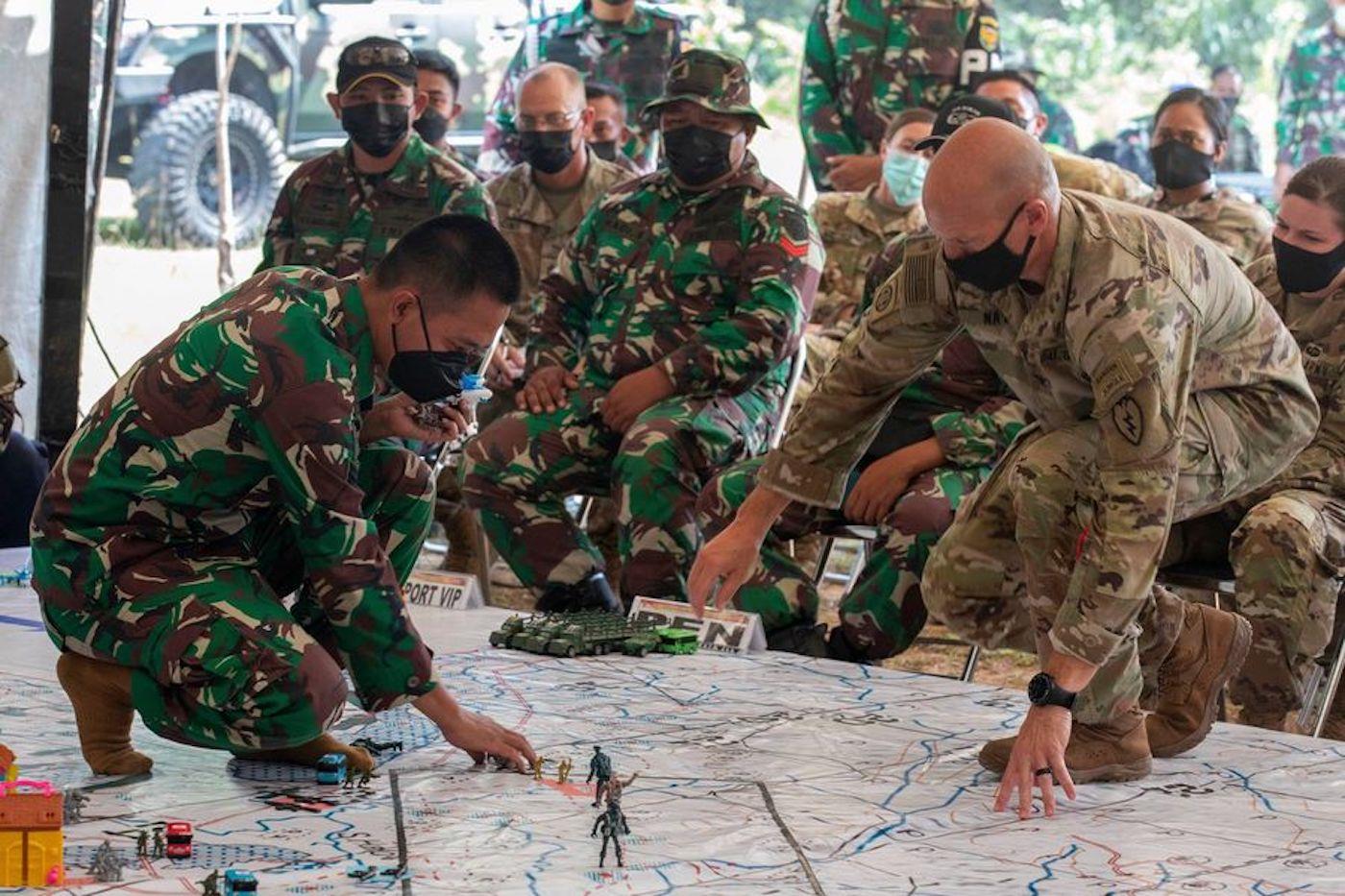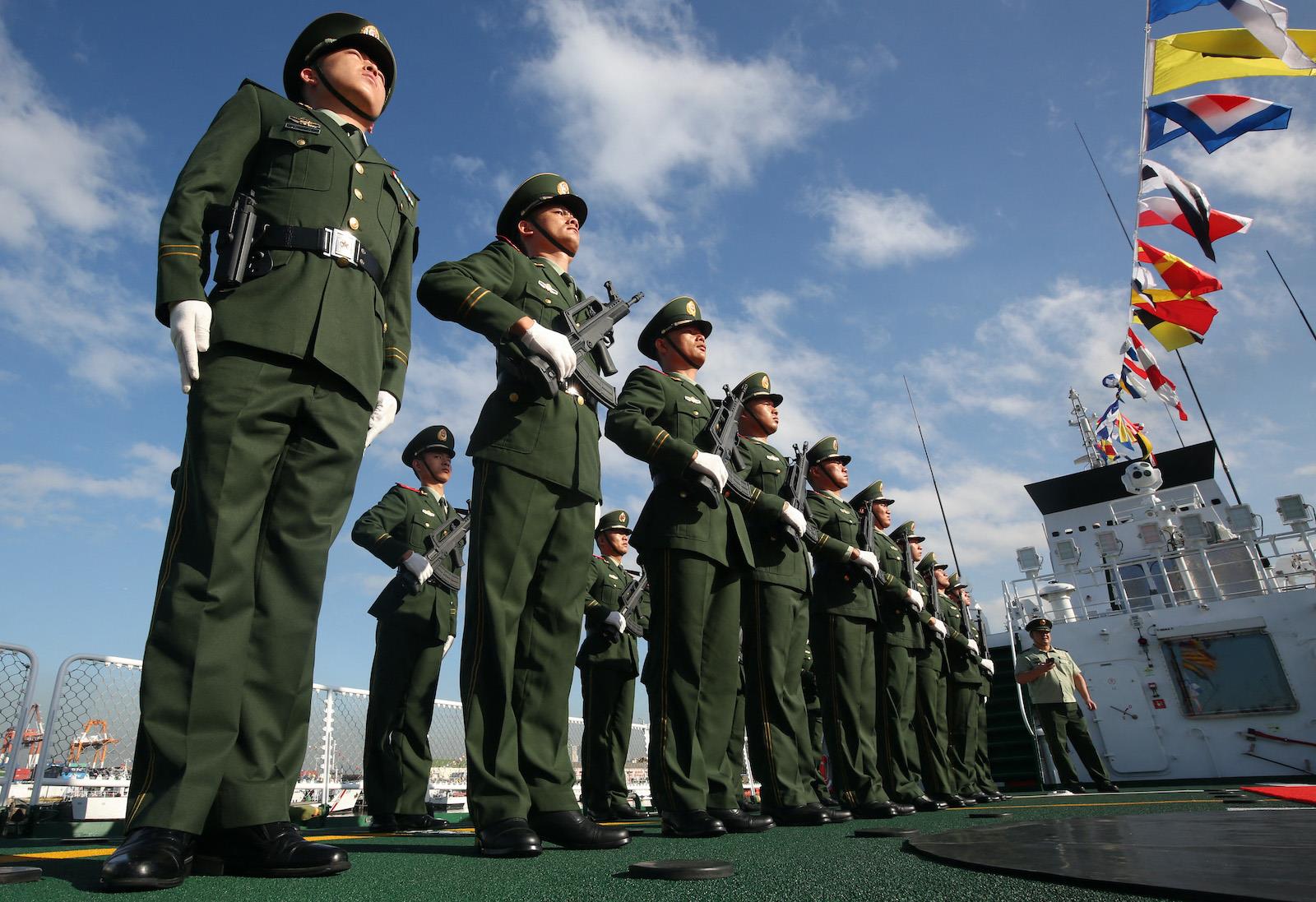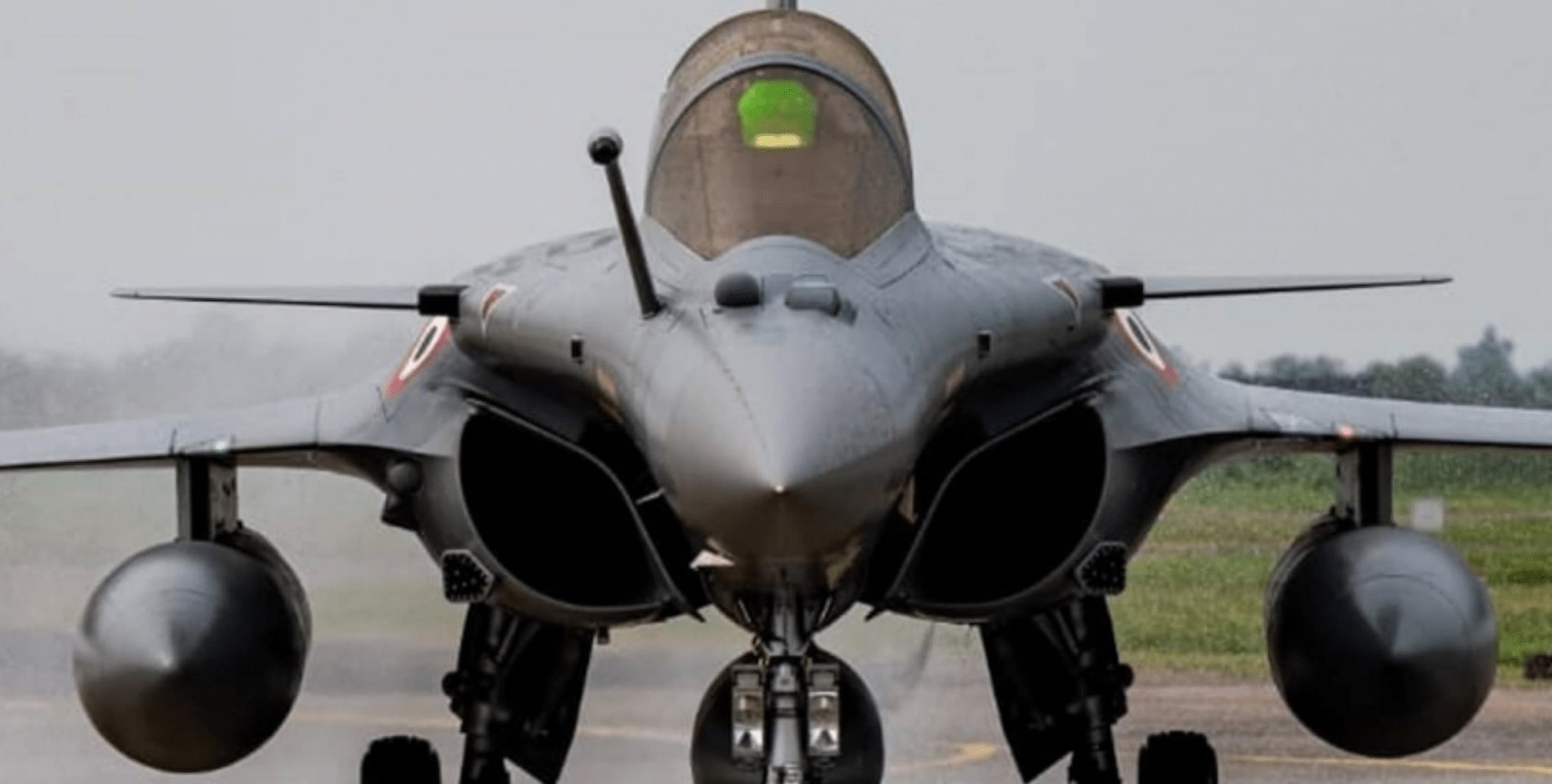(MENAFN- Asia Times)
JAKARTA – While Indonesian foreign policy remains on a neutral track, the country's military is tilting ever more towards the United States and the West with preparations underway for its biggest-ever combined arms exercise next August that for the first time will skirt the South China Sea.
The Indonesia-US Garuda Shield maneuvers, which began in 2009, are being expanded this year to accommodate eight other countries, including Australia, Canada, Japan, Malaysia, Singapore, Britain, Papua New Guinea and Timor Leste.
They will also involve land, sea and air components focused on southern Sumatra and East Kalimantan but with plans for an amphibious landing in the Natuna islands, south of where Chinese Coast Guard and Chinese research vessels breached Indonesia's exclusive economic zone (EEZ) last year.
Not all of the eight nations will be active participants and several other countries will send observers to gauge the benefits of taking part in future exercises given Indonesia's position astride key chokepoints for international trade.
Those include the Malacca Strait, through which as much as 80% of China's crude imports pass. Analysts have noted those shipments could be easily blocked by the US or its allies in the event of a conflict, a strategic vulnerability often referred to as China's“Malacca dilemma.”
One foreign military source described the exercises as a“litmus test,” which he said could lead to a permanent broadening of Garuda Shield, something the US and Indonesian militaries have both been anxious to do and is now likely to become a reality.
Analysts say a multinational Garuda Shield is certain to raise the ire of Beijing and will also complicate the government's efforts, driven by perceived economic necessity and a history of non-alignment, to strike a balance between the two competing superpowers.
Australia, Japan, Malaysia and Singapore will field forces but it is not clear what their contributions will be in addition to Indonesia and the US, whose troops and supporting equipment will be flown from Hawaii aboard 15th Air Wing C-17 transport planes.
Apart from mentioning a role for the US, Indonesian and Japanese air forces, official statements have also given few details on what aircraft are taking part and whether they will be called on to support the planned maritime operation.

US and Indonesian troops in a Garuda Shield exercise in 2021. Image: US Embassy in Indonesia
In previous exercises, Garuda Shield has stayed clear of the southern reaches of the South China Sea, where China's wide-ranging nine-dash line of claimed national sovereignty intrudes into the EEZ and outer parts of the 154-island Natuna archipelago.
This time, some of the exercise is expected to take place near a small group of islands south of Natuna Besar, the archipelago's main island which boasts a newly-extended runway, ungraded port and refueling facilities, elements of a Marine battalion and a missile defense system.
The last major exercise there was in 1996 but it involved only Indonesian land, sea and air forces and was conducted during the final years of president Suharto's rule when tensions with China over the nine-dash line were not an issue.
Beijing protested last year's exercise, already a step-up from previous years with the involvement of more than 1,500 troops from the US 25th “Tropic Lightning” Infantry Division and 2,100 from the Army Strategic Reserve (Kostrad), Indonesia's two-division combat force.
It was, however, confined to southern Sumatra's Baturaja training ground for jungle warfare and live-firing drills and other locations in East Kalimantan and North Sulawesi where the two nations practiced parachute drops and beach landings.
Both of the latest Garuda Shield exercises are being staged during the tenure of US-educated General Andika Perkasa, who was promoted from army chief to armed forces commander last November and enjoys strong ties with the US Indo-Pacific Command. He has only seven months to go before retirement.
While the government strives to maintain its fence-sitting posture and Defense Minister Prabowo Subianto keeps his own careful counsel, there appears little doubt where much of the military leadership stands on the issue of China.
“We want to vary our exercises so we don't do the same thing every year and also increase their complexity,” Maj-Gen Matthew McFarlane, deputy commander of US Army Pacific, said during a recent visit to Jakarta.“I think this is the beginning of a good thing.”
In fact, it is part of Washington's new Indo-Pacific strategy, which seeks to build stronger links and boost security among Southeast Asian allies as China continues to expand its reach across the wider region and threaten what McFarlane calls a“free and open Pacific.”

Members of the Chinese Coast Guard stand in formation on board their vessel after it anchored at Manila port on January 14, 2020. Photo: AFP / Stringer
Australia, New Zealand and Micronesia have been alarmed at recent Chinese moves to establish a security treaty with the largely-neglected Solomon Islands, although Prime Minister Manasseh Sogavare has ruled out a military base as part of the agreement.
Officials say there are now 235 separate military engagements between the US and Indonesia each year, ranging from education and training to exercises and high-level meetings, such as a visit last month by US Pacific Fleet commander Admiral John Aquilino.
Only a few days before Aquilino arrived, President Joko Widodo had signed a regulation aimed at strengthening security around the Natunas. While short on detail, it calls for improving infrastructure and other facilities“to support sovereignty and secure state boundaries.”
The Indonesian Navy was reportedly furious at being reduced to the role of an observer when a Chinese research ship and two armed escorts spent seven weeks inside Indonesia's EEZ last August-October mapping the seabed around a natural gas exploration site.
Quietly posted on the Cabinet secretariat's website, the new decree defines defense and security zones on both the western and eastern sides of the Natunas, where the navy's Western Fleet plans to establish a forward combat support base.
Indonesia made no official complaint to Beijing over the incursion, in keeping with its policy of plotting a careful middle course between the US and China, which has become a major industrial investor and its foremost trading partner.
But Beijing's subsequent protest over a military exercise far from its shores and its increasingly assertive actions at sea have made that position increasingly difficult to hold, especially with the military drawing closer to the West, both operationally and also in its weapons purchases.
Prabowo has proposed buying both French-made Rafale and US F-15EX jet fighters for Indonesia's future frontline air defenses, along with Italian guided-missile frigates and possibly French submarines as part of a major modernization program.

Indonesia plans to acquire French-made Rafale jets to gradually replace its Russian fleet. Photo: Twitter
The last exercise between the Indonesian and Chinese militaries was in May 2021 when two Chinese guided-missile frigates took part in limited maneuvers with an Indonesian frigate and a smaller fast attack craft in waters north of Jakarta.
The exercise went ahead a month after fast-responding Chinese salvage ships unsuccessfully sought to raise the German-built Indonesian submarine KRI Nanggala 402, which mysteriously sank with all 53 hands north of Bali.
The only Chinese weapons in Indonesia's inventory are C-802 and C-705 anti-ship missiles, the QW-3 man-portable surface-to-air missile, Giant Bow II anti-aircraft guns and a naval Type 730 Gatling gun.
Russia has supplied Indonesia with more than a dozen missile systems, plus two squadrons of Su-27/30 multirole jets whose operational status and spare parts supply may now be in jeopardy as a result of Ukraine-related US and European sanctions.
Ironically, Jakarta turned to Russia for weapons procurements during a 15-year US military embargo imposed following a 1991 massacre in then-East Timor and the bloodshed sparked by the territory's vote for independence eight years later.
Indonesia recently felt compelled to finally cancel an order with Moscow for new-generation Su-35 fighters, rather than risk damaging US economic sanctions – and a loss of preferential trading rights – imposed under the Countering America's Adversaries Through Sanctions Act (CAATSA).
MENAFN20042022000159011032ID1104056290